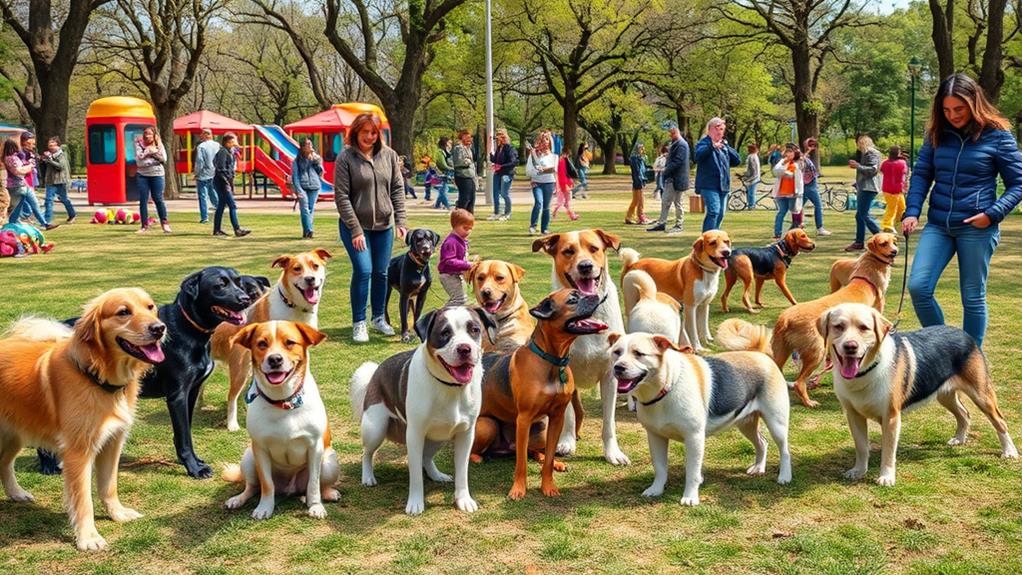Socializing rescue dogs in new situations is all about patience and understanding. Start by observing your dog's body language and comfort levels. Introduce new experiences gradually, allowing them to explore at their own pace. Use positive reinforcement like treats and praise to encourage calm behavior. When meeting other dogs or new people, choose controlled environments and respect your dog's boundaries. If your pup shows signs of stress, take a step back. Building their confidence takes time, so remain consistent and loving. Keep going, and you'll discover even more practical strategies to help your furry friend thrive.
Understanding Your Rescue Dog
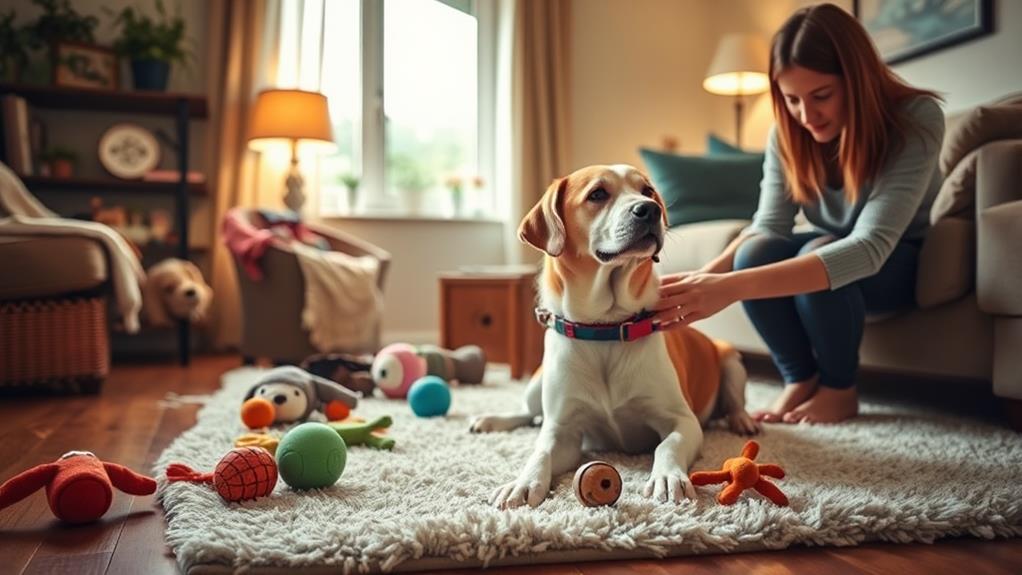
Understanding your rescue dog begins with empathy. You've taken in a dog that may have experienced trauma, neglect, or uncertainty in their past. Every bark, wag, or flinch can tell you a story about their previous life. It's vital to observe their body language and reactions to different situations. Notice how they respond to new environments, people, and sounds.
You might find that your rescue dog seems shy or fearful at first, and that's completely normal. They may need time to adjust and feel secure in their new home. Be patient and give them space, allowing your dog to explore their surroundings at their own pace. When they initiate contact, whether through a gentle nudge or a curious sniff, reward that behavior with praise or treats.
Build trust by establishing a routine and providing consistency. Your rescue dog thrives on predictability, which helps them feel safe. Remember, they're learning to navigate a world that might've been overwhelming before. By fostering an environment of love and understanding, you'll help your dog blossom into their true self, ready to embrace all the new experiences life has to offer.
Assessing Comfort Levels
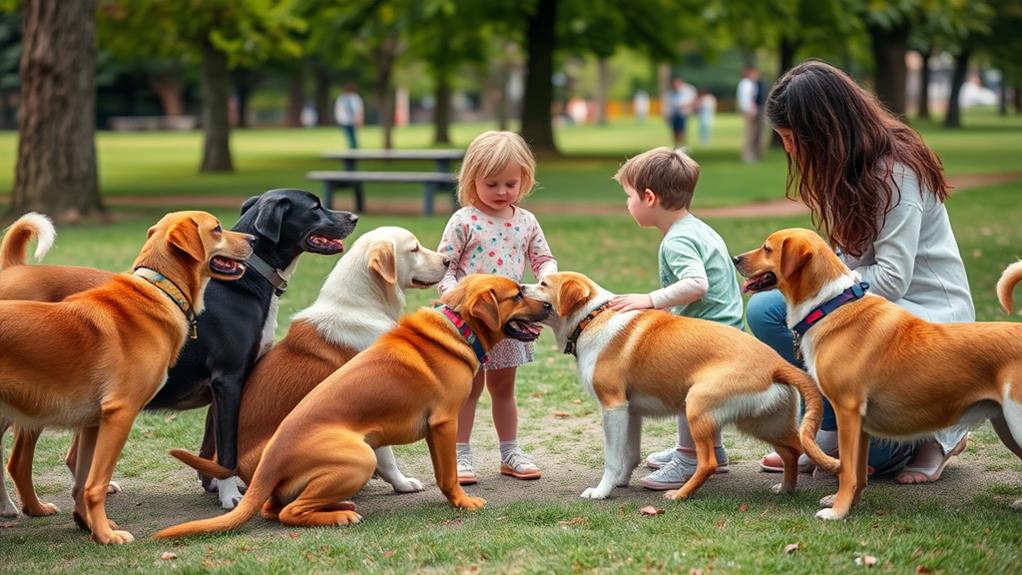
As you spend time with your rescue dog, it's essential to assess their comfort levels in different situations. Pay attention to their body language and reactions. This will help you gauge what environments may be overwhelming or enjoyable for them.
Consider creating a simple table to track their comfort levels across various scenarios. Here's an example:
| Situation | Comfort Level | Dog's Reaction |
|---|---|---|
| Meeting new people | Low | Hiding, tail tucked |
| Walking in the park | Medium | Curious but cautious |
| Car rides | Low | Whining, pacing |
| Visiting a pet store | High | Relaxed, exploring |
| Playing with other dogs | Medium | Playful but avoids rough play |
Use this table to record observations after each outing. By identifying patterns, you'll see where your dog thrives and where they struggle. This understanding helps you make informed decisions about future socialization efforts, ensuring you prioritize their emotional well-being. Remember, it's all about building a positive experience for your rescue dog as they adjust to their new life.
Gradual Exposure Techniques
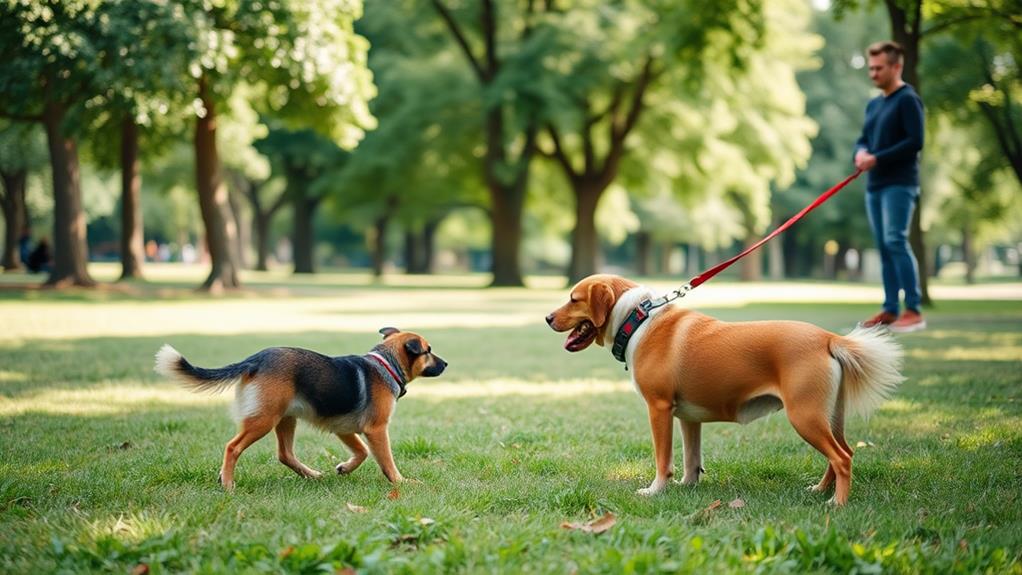
Often, gradual exposure techniques can make a significant difference in helping your rescue dog feel more comfortable in various situations. Instead of overwhelming your dog with new experiences all at once, take a step-by-step approach to introduce them to different environments, sounds, and people.
Start by identifying specific situations that trigger your dog's anxiety. For example, if they're uneasy around other dogs, begin by observing a calm dog from a distance where your pup feels safe. Gradually decrease the distance over time, allowing your dog to adjust at their own pace.
You might also want to incorporate new experiences into your daily routine. If your dog's nervous about car rides, take them on short trips to positive destinations, like a park or a favorite spot. This helps them associate the car with enjoyable experiences.
Be patient and pay attention to your dog's body language. If they seem stressed, take a step back and give them more time to acclimate. Remember, consistency is key, and with gradual exposure, your rescue dog will learn to trust you and feel more secure in new situations.
Positive Reinforcement Strategies
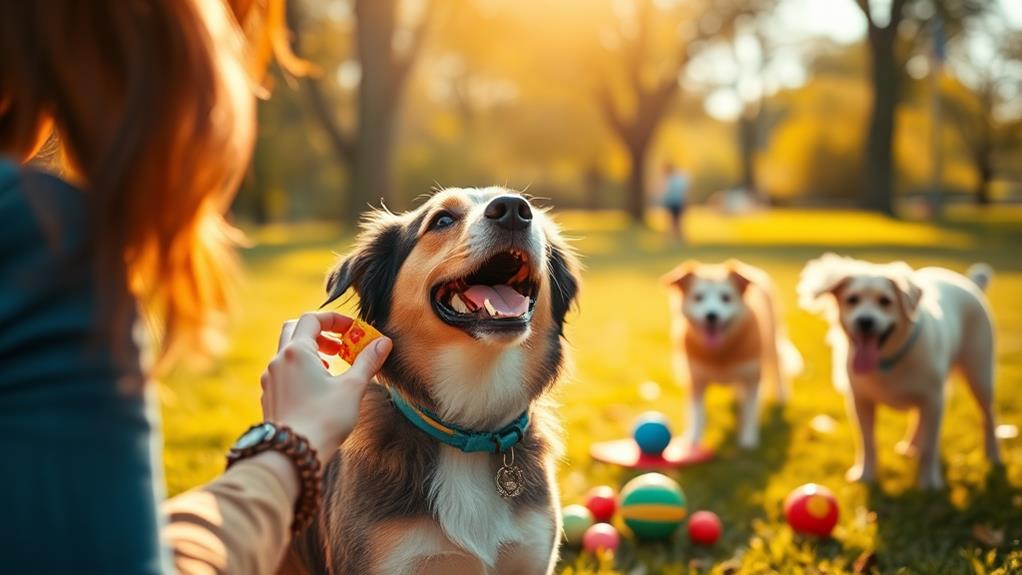
Positive reinforcement strategies can substantially enhance your rescue dog's socialization process. By rewarding your dog for positive behavior, you create a safe and encouraging environment that fosters learning. Start by identifying what motivates your dog—treats, toys, or praise—and use these rewards during training sessions.
When introducing your dog to new situations, keep treats handy. If your dog remains calm or explores a new environment, immediately reward that behavior. This encourages them to associate new experiences with positive outcomes. Consistency is key; make sure you reward the desired behavior every time it occurs.
Additionally, use a cheerful tone and body language to reinforce positive interactions. When your dog responds well to a new situation, praise them enthusiastically. This not only boosts their confidence but also strengthens the bond between you.
Try to avoid punishment or negative reinforcement, as these can lead to fear or anxiety. Instead, focus on redirecting any unwanted behaviors with alternatives that can be rewarded. Over time, your dog will learn to navigate new experiences with confidence, making socialization a more enjoyable and successful journey for both of you.
Socializing With Other Dogs
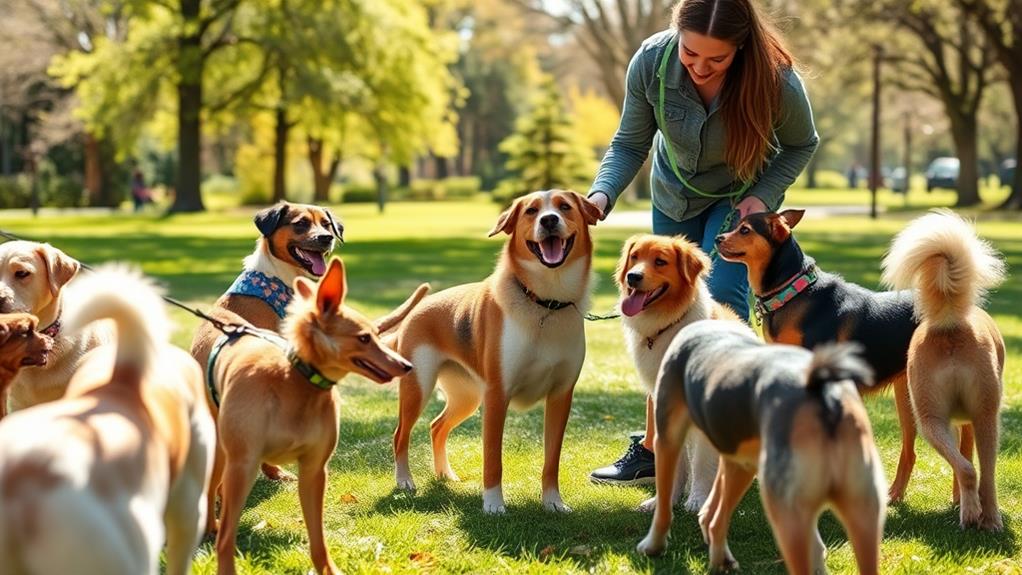
Socializing with other dogs is a crucial aspect of your rescue dog's development and well-being. It helps them learn proper behavior, reduces anxiety, and builds confidence. Start by introducing your dog to calm, well-mannered dogs in a controlled environment. This way, they can observe and mimic positive behaviors.
Take it slow; let your dog approach at their own pace. Use positive reinforcement to reward good interactions. If your dog shows signs of stress or aggression, remove them from the situation and try again later.
| Step | Description | Tips |
|---|---|---|
| Initial Setup | Choose a neutral location | Avoid busy parks initially |
| First Meeting | Use a leash for control | Keep the first interaction brief |
| Positive Reinforcement | Reward good behavior | Use treats and praise |
| Gradual Exposure | Increase interaction time | Observe your dog's comfort level |
Meeting New People
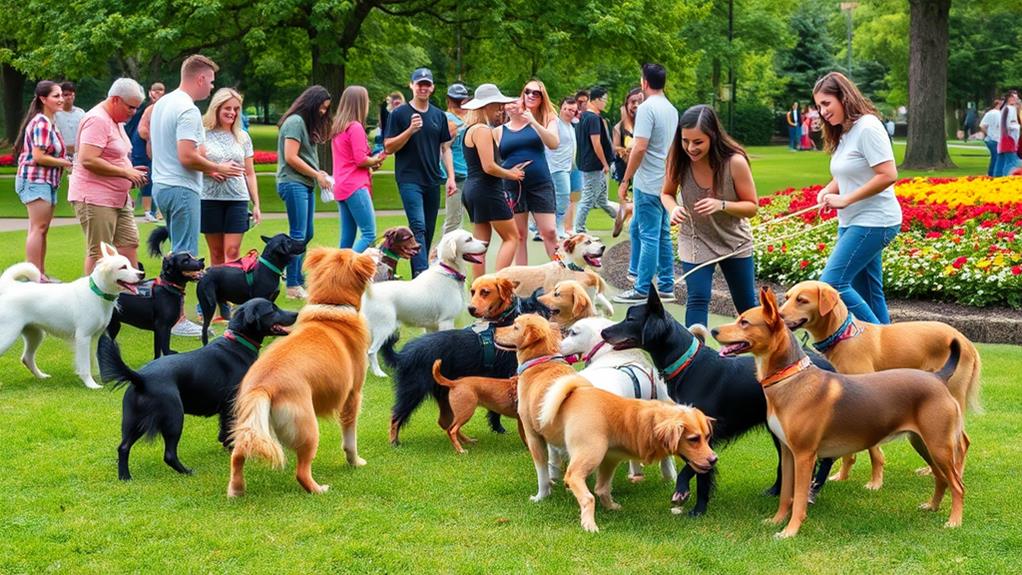
Introducing your rescue dog to new people is essential for their social development. Start by choosing calm, friendly individuals who understand that your dog may be nervous. Approach introductions slowly, allowing your dog to observe from a distance before making contact. This helps them feel secure.
When meeting someone new, keep your dog on a leash to maintain control. Encourage the person to crouch down, avoiding direct eye contact initially. This non-threatening posture can make your dog feel more at ease. If your dog seems relaxed, let the person gently offer a treat. This positive reinforcement builds trust and encourages your dog to associate new people with good experiences.
Pay attention to your dog's body language. If they show signs of fear or discomfort, give them space and take a step back. Always respect their boundaries. Gradually increase the number of people your dog meets over time. The more diverse interactions they have, the better they'll adapt.
Navigating Public Spaces
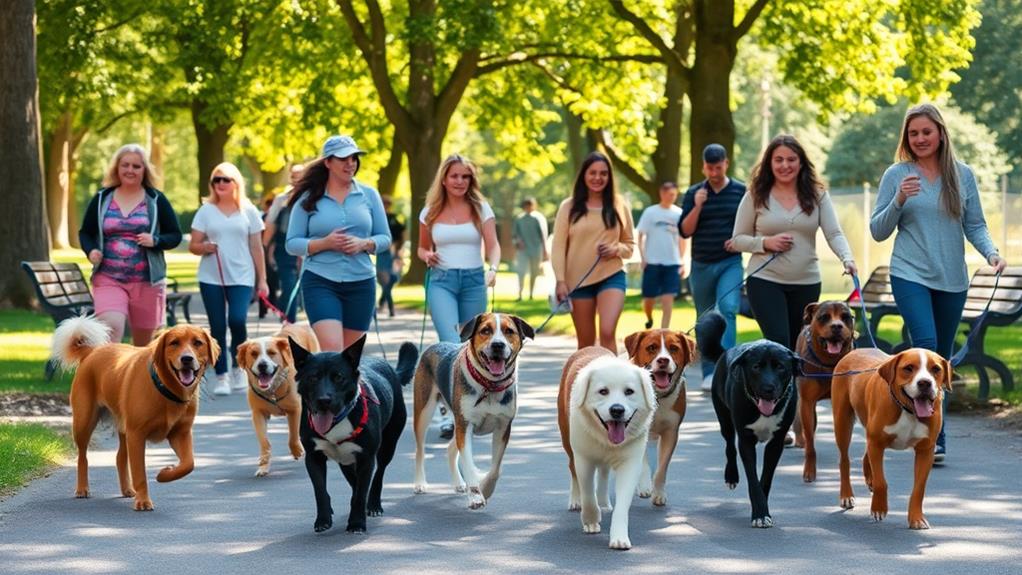
When you take your rescue dog into public spaces, it's important to set them up for success. Start by choosing quieter times to visit places like parks or cafes. This helps your dog feel more at ease without overwhelming distractions. Keep your dog on a short leash to maintain control and prevent them from darting off unexpectedly.
Before entering a new space, let your dog observe the surroundings from a distance. Gradually approach the area, allowing them to acclimate at their own pace. Bring along treats to reward calm behavior and reinforce positive experiences. If your dog shows signs of anxiety, take a step back and give them time to relax.
Introduce your dog to new surfaces gently, like grass or pavement, so they can gain confidence. Encourage them to interact with safe objects, such as benches or trees, to create positive associations. If other dogs or people approach, assess your dog's comfort level and decide whether to engage or maintain distance.
Managing Overstimulation
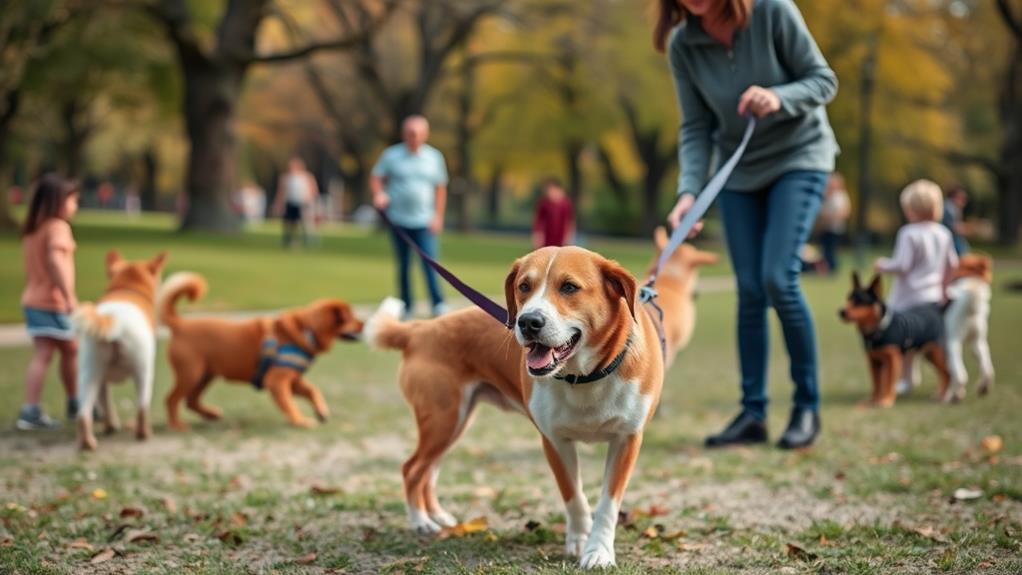
Overstimulation can quickly turn an enjoyable outing into a stressful experience for your rescue dog. When your dog encounters too many sights, sounds, or smells at once, it can become overwhelmed. To manage this, pay close attention to your dog's body language. Signs of stress, like panting, whining, or pulling away, indicate that your dog needs a break.
Create a calm environment by choosing quieter times or less crowded locations for outings. If you're in a busy area, consider moving to a more serene spot where your dog can regroup. Use a favorite toy or treat to redirect their focus and help them relax.
Short, positive experiences are key. Start with brief trips to new places, gradually increasing exposure as your dog becomes more comfortable. If your dog becomes overstimulated, remove them from the situation and allow them to decompress.
Building Confidence Over Time
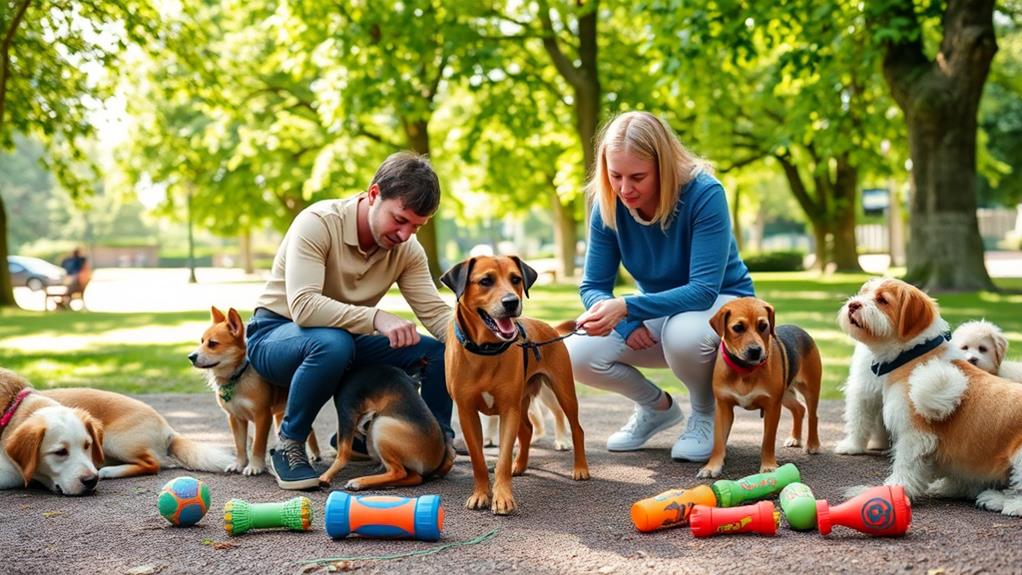
Building confidence in your rescue dog takes patience and consistent effort. You need to create a safe and supportive environment where your dog can thrive. Gradually expose them to new situations, people, and other dogs, but always at their pace. Celebrate small victories to reinforce their progress.
| Step | Activity | Goal |
|---|---|---|
| Start Small | Short walks in quiet areas | Reduce anxiety and stress |
| Positive Reinforcement | Use treats and praise | Build positive associations |
| Gradual Exposure | Introduce new environments | Increase comfort and confidence |
As you work through these steps, observe how your dog reacts. If they seem overwhelmed, take a step back and allow them to adjust. Consistency is key; keep practicing these activities regularly. Also, consider enrolling in a positive reinforcement training class. This can provide support and a structured environment for your dog.
Frequently Asked Questions
How Long Does It Typically Take to Socialize a Rescue Dog?
Socializing a rescue dog can take anywhere from a few weeks to several months, depending on the dog's background and temperament. Patience and consistency are key, so don't rush the process—each dog is unique.
What Signs Indicate My Dog Is Stressed During Socialization?
Did you know that about 70% of dogs show signs of stress in new environments? If your dog's tail is tucked, ears are back, or they're panting excessively, it's likely feeling overwhelmed. Pay attention!
Can Rescue Dogs Ever Fully Overcome Past Traumas?
Yes, rescue dogs can often overcome past traumas, but it takes time, patience, and consistent support. You'll notice improvement through positive experiences, and with your love, they can learn to trust and feel secure again.
Are Certain Breeds More Challenging to Socialize Than Others?
While some might think all breeds are equal, certain breeds, like terriers or hounds, can be more challenging to socialize due to their instincts. However, with patience and consistency, you can help them thrive.
What Should I Do if My Dog Reacts Aggressively to New Experiences?
If your dog reacts aggressively to new experiences, stay calm, avoid punishment, and create a safe space. Gradually expose them to new stimuli while rewarding calm behavior, helping them associate positive feelings with these situations.
Conclusion
Socializing your rescue dog is like nurturing a delicate flower; with patience and care, it can bloom in new environments. Remember, each small step is a victory. By understanding your pup's comfort levels and using positive reinforcement, you're paving the way for confident interactions. Embrace the journey, celebrate progress, and don't rush the process. Your efforts will transform your dog into a well-adjusted companion, ready to thrive in any situation. Happy socializing!

